19 years ago
Description:
The Full Stall (stalling the whole glider) is one of the most important manouvres, what you have to practiece a lot, if you want to learn other acro tricks. You will have to use it a lot for sure! Many times when you do a mistake, there’s no other fast and safe way to get back the control over the glider. It’s also very important to get to know the limits of your wing. In a word, if you became confident with Full Stall, you will fly and doing acro much safer!
Preparation:
To prevent riser twisting, set your harness to sitting position, open the chest strap as much as possible and put your legs under the harness. Take one wrap if the brakelines are long.
Enter:
Slow down the glider to minimum speed by gently and symmetrical braking. When it’s stabilized above you (it doesn’t swing anymore), immediately pull down the brakes as much as you can. As the airflow on the whole glider gone, the wing stalls and falls back behind you. Don’t be afraid, you will feel like somebody pull you back. KEEP the brakes locked at least until you swing back under the glider.
At the beginning the glider will pulse heavily (because you keep the brakes very deep) and it’s quite difficult to control the Full Stall like this. To stabilize it slowly and simmetrically release the brakes around to the level of your elbows (of course it really depends on the type of the glider and the brake setting!), until you notice the canopy calms down, doesn’t pulse anymore, the brakes don’t yank, and it’s much easier to keep them. This position is called Stabilized Full Stall. Now the glider is mostly opened, only the wingtips are collapsed and facing to the front, whilst you are flying backwards (almost as a Tail Slide). It may needs a little bit more practicing to find this point.
Exit:
During the Full Stall if it is not stabilized, the glider is pulsing and the pilot also swinging a little bit underneath the canopy. When the glider is above, or a little bit in front of you, quickly release the brakes up to slightly braked position By this the glider starts to reinflate and shoot forward as it picks up speed. Just after the glider started to surge, brake it carefully to prevent collapses. The more violent it shoots forward, the stronger you have to brake to stop it.
From a stabilized Full Stall, it’s very easy to exit, because the glider is smoothly over your head. Just release the brakes quickly, than control the following surge by gently braking.
If you see the glider will shoots forward asymmetrically, brake only the faster side (which is lower) until the slower one accelerates and comes down to the same level. Than stop it with symmetrical braking, as usual.
Dangers!
When the glider stalls because of your pendulum you will go further than your wing (the glider slows down faster than you can) and it will be far behind you for few moments. NEVER EVER RELEASE THE BRAKES WHEN THE GLIDER IS BEHIND YOU, BECAUSE THE FOLLOWING SURGE CAN BE SO STRONG, YOU CAN EVEN FALL INTO THE CANOPY!!! It’s easy to imagine why: the glider starts to fly and shoots forward very violently at the same moment you swing back from a big pendulum. This two effects togather generates the dynamic movement, which can be easily strong enough to fall into, or even behind the wing!
It can also happens that one of your hands goes up unintended because of the heavy brakes (especially when the glider is pulsing). In this case you have to choose what to do. You can release the other brake immediately and lead out the Full Stall, or you can also try to pull it back quickly, but if you are not fast enough, the glider starts to Spin very fast and you can easily end up in a riser twist. Please read also the dangers of Spin and riser twisting. Anyway, the amount of the brake pressure during the Full Stall is various, from glider to glider.
Maybe the most critical part of the Full Stall is the exit. The glider has no horizontal speed (actually it’s even sliding backwards!) and it has to accelerate. Be careful, if you brake the glider too hard when it shoots forward, it can easily stall again (usually asymmetrically!), however if you don’t brake it enough you could get VERY big collapses and cravattes! If you start to spiralling down with a cravatted wing, and you don’t have hundreds of meters below you, don’t hesitate to throw your reserve!
Don’t practice this manouvre if your glider is overused and its porosity is bad (anyway, don't do ANY aerobatics with wings like that!), because you can easily end up in deep stall (parachutage) after the exit, especially if you release the brakes too slow, and you don’t let the glider to pick up speed! However if it happens, pull out your speed bar, or if it’s not prepared, gently pull forward the „A” straps with your palms to accelerate the glider and get out from the deep stall.


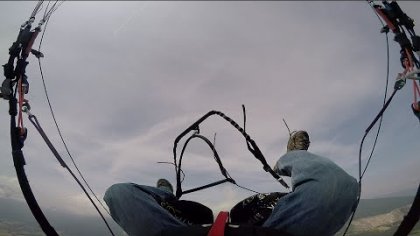
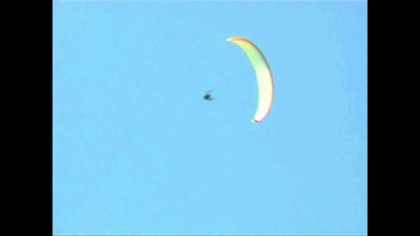
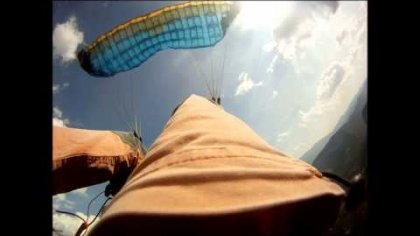
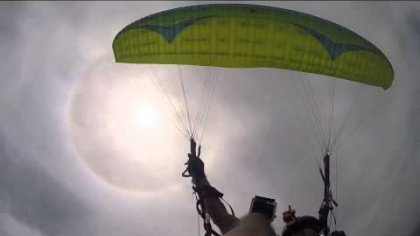
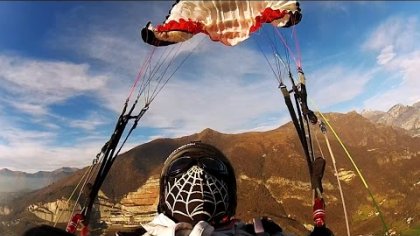
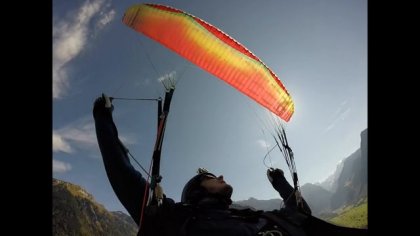
Latest Comments
Laymen : early release when you encountering backfly ... let it stable on your head and then let go brakes gradually.
!!
PS: a dynamic full stall needs proper energy killing into a smooth flight ( normal wing speed )
Where the energy transformation has to be gradually matching the dynamics
Flight Motion stopped sudden into stall thus a loaded pendulum decending but not so gradual killing the energy (pump kinda release at last) led the wing into a fast surge of loaded decending pendulum.
Hi JaroXS!
Yes it looks like an Octane FLX. I should get one soon so I scan you tube trying to get an idea on how it behaves.
In my limited experience strongish dives happen out of stalls if you reopen the wing too much during the tailslide, as normaly the deflated wingtips'drag help to soften the shoot. Yet here it doesn't seem to be the case!
I had similar situation 3 times, and I was also in stabilized Fullstall. I think my mistakes was that I was moving up the breaks too fast. On small acro wing you need to do it carefully and catch the surge on time. Anyway you are right...This shot on that movie was really strong...
Maybe someone can explain it better...
On my small Nikita 19m I always release the breaks carefully, but even that it shots a lot ;-)
Was that the Octane FLX ?
Regards,
Jarek
Hello experts ;-)
I'd like to know your opinion on this :
http://www.youtube.com/watch?v=rMRNLvffjbw
Ok the pilot should have caught the dive...yet wasn't this dive very agressive coming from a stable stall? What did he do wrong?
suggestion "keep holding (lock) the breaks when you see the sky, let go gradually as pal had mentioned soon you see horizon while sitting acro position (sight towards horizon)
--
my best regards
akshat sharma, (IAS)
team flyoctane
http://www.flyoctane.com/
Is it normal to sometimes have small cravattes after fullstalls?
hi dud!
what’s the deferent between "full stall when u keep full the brakes below the harness after u pooling" & "full stall when u release the brakes to be in stabilized full stall"?
Is there 2 methods? Is it correct that some one call them "SIV-full stall” and "Acro-fullstall"?
It is different, but i would never teach someone to do a pull-and-hold type of fullstall, only the stable is important! Gives much more confidence, safety and will tell you more about your glider! Of course much easier to handle!
Lupus